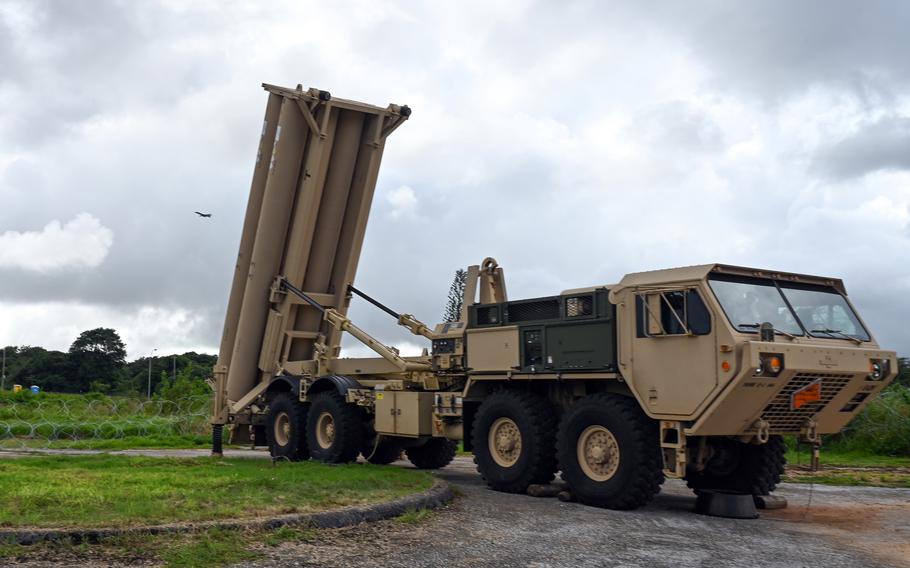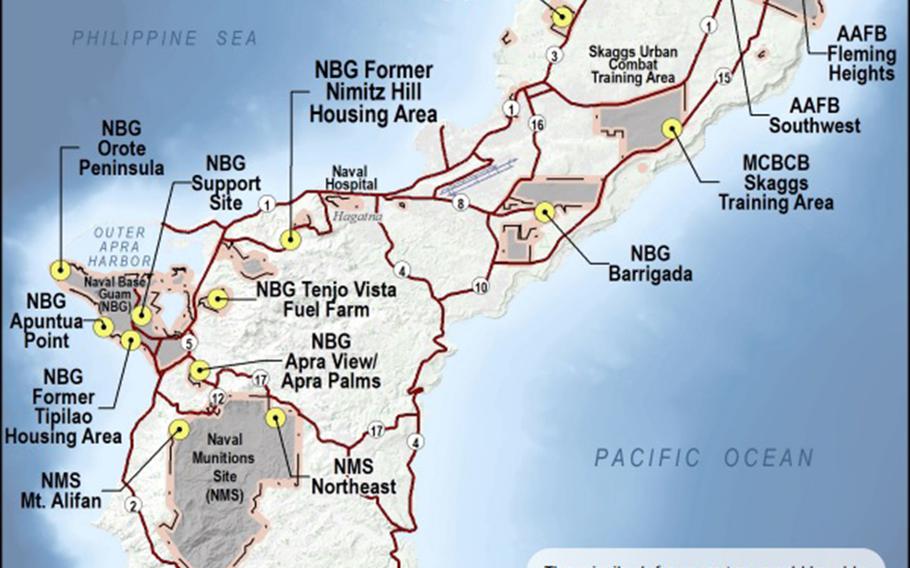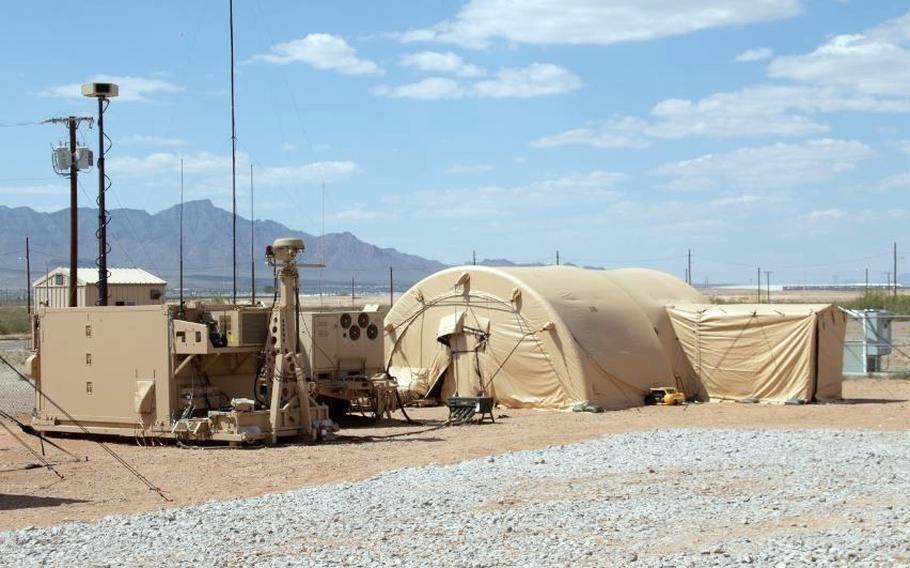
A missile-defense system proposed for Guam would expand on capabilities already found on the island, such as this THAAD system, seen here on Nov. 11, 2022. (Hannah Malone/U.S. Air Force)
A missile-defense system proposed for Guam is expected to be operational by 2027 and comprise up to 20 individual sites across the island to achieve 360-degree coverage, according to the Missile Defense Agency.
New details about the project — the Enhanced Integrated Air and Missile Defense System — show 20 locations ranging from Guam’s northernmost coastline to the island’s relatively remote southern region, according to a fact sheet released by the agency on Friday.
The system’s components — radars, sensors, launchers, interceptors, support facilities and a command-and-control center — would be distributed around the island to achieve its 360-degree capability, according to Joint Region Marianas, the installation management command on Guam.
“The proposed action is needed to provide a comprehensive, persistent defensive system for Guam that can adapt against the rapidly evolving threats of missile attacks from regional adversaries,” Lt. Cmdr. Katie Koenig, spokeswoman for Joint Region Marianas, said in an email Friday.

The Missile Defense Agency is considering about 20 sites around Guam that would host a variety of equipment for a 360-degree system meant to protect the island from ballistic, cruiser and hypersonic missiles. (Missile Defense Agency)
Most of the components would be built on military installations, according to the MDA release. But the project may require the purchase of privately owned real estate as well.
“Site selection is evolving, and additional sites may be considered,” Koenig said.
The announcement is “overwhelming,” according to Robert Underwood, a former delegate to Congress from Guam and chairman for the research institute Pacific Center for Island Security.
“They’re proceeding with this combination of scoping and EIS review, and we don’t really know what sites they’re talking about,” he said by phone Friday, referring to the environmental impact study required under the National Environmental Policy Act.
Even the Defense Department is concerned about the system’s effectiveness, Underwood said. He cited a January report from the Secretary of Defense’s Office on Operational Test and Evaluation that called the project a “significant test planning challenge” and suggested additional development of testing strategies and an “agile test program” for the system.
A spokesperson for MDA, which is based in Virginia, did not immediately respond to requests for additional details, such as the number of personnel required to operate the system, or comments on the January report.

The U.S. Army's Integrated Air and Missile Defense Battle Command System, seen here at White Sands Missile Range, N.M., Dec. 12, 2019, is expected to be one component of Guam's proposed missile-defense project. (Luke Allen/U.S. Army)
The project, a joint effort between several DOD agencies and spearheaded by MDA, is a response to perceived threats from potential adversaries like China and North Korea, including ballistic, cruise and hypersonic missiles. An estimate of the cost to build the system was not included in the announcement Friday.
“Within the context of homeland defense, Guam is a key strategic location for sustaining and maintaining U.S. influence, deterring adversaries, responding to crises and maintaining a free and open Indo-Pacific,” the Friday release said. “Current U.S. forces are capable of defending Guam against regional ballistic missile threats. However, regional missile threats to Guam continue to increase and advance technologically.”
The project’s official notice of intent was published Friday, launching a 30-day window for public comment for “identifying, defining and prioritizing issues to be evaluated” in the project’s environmental impact statement. A draft of the statement is expected to be released in spring 2024, according to the fact sheet.
Public scoping meetings are scheduled for June 14 at the University of Guam Fieldhouse; Okkodo High School on June 15 and Southern High School on June 16. The National Environment Policy Act mandates a 45-day comment period following the environmental impact statement’s release.